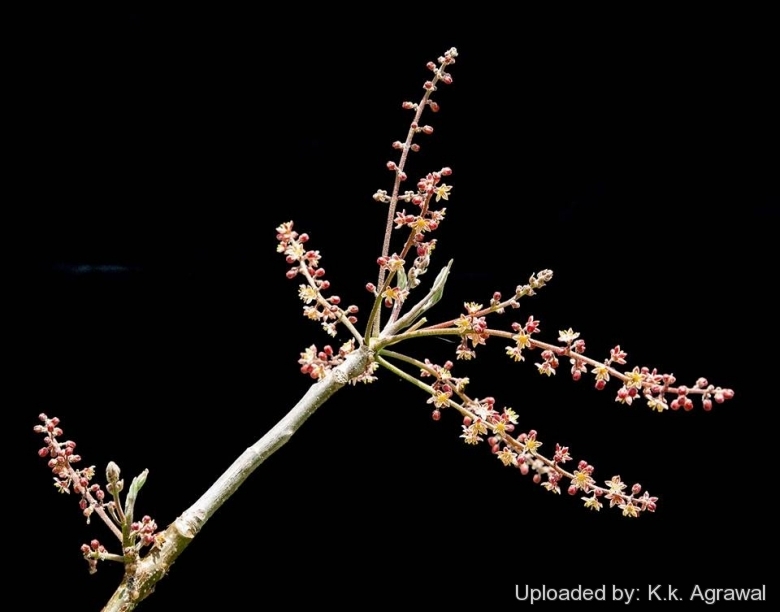
Bursera grandifolia Photo by: K.k. Agrawal
Origin and Habitat: Mexico, southeastern and east-central Sonora south of the Rio Yaqui to Vera Cruz. Also Guerrero, Colima and southwestern Chihuahua.
Altitude range: 275-1065 metres above sea level.
Habitat: It grows in slopes and canyons, often in small dispersed stands or as scattered individuals; mainly subtropical and tropical deciduous forest. The thick trunks, unusual bark, and large leaves make these trees striking elements of the dry tropical forests.
Synonyms:
See all synonyms of Bursera grandifolia
back
Accepted name in llifle Database:Bursera grandifolia (Schltdl.) Engl.Monogr. Phan. [ A.DC. & C.DC.] 4: 45. 1883 [Mar 1883]Synonymy: 6
back
Common Names include:
HUARIHIO ( Guarijío, Varihío, or Warihío): Napitoro
MAYO (Mayo): To'oro mulato
SPANISH (Español): Mulato, Palo mulato, Chutama, Chicopun, Jiote blanco, Guande blanco
TARAHUMARA: Iweri, Palo mulato
Description: Bursera grandifolia is a well-known tree 6-15 m tall with large, arcing trunks that branch near the base often forming a very open broad crown; this species looks like an enormous rounded shrub. The greenish grey inner bark contrasts strongly with the papery reddish outermost bark. It is leafy only during summer rainy season, quickly drought deciduous in autumn.
Related species: Bursera grandifoliaSN|28008]]SN|28008]] look like to the related Bursera simaruba but is readily distinguished by its unusual bark, fewer, larger, velvety-pubescent leaflets with prominent veins, and ornamental masses of pink to whitish flowers.
Stem: Trunk to 40-60 cm in diameter. Young branches stout, densely puberulent becoming glabrous. Bark of limbs and trunk dark green to bluish green during summer rainy season, in dry seasons exfoliating in large copper-colored papery strips or sheets rustling in the wind. The inner bark is bright red, smooth and often with a powdery bloom (glaucous) that can be rubbed off and lacks fragrance. The heartwood is white and also lacks the incense of certain other members of the genus. Stems and in-florescences exuding aromatic, white sap when cut.
Leaves: Once pinnate, 15-43 cm long. Leaflets 3-7 per leaf, 5-16 cm long, 3-9 cm wide, oblong-ovate, broadly elliptic, to obovate, with a caudate tip and entire margins, velvety pubescent on both surfaces, bright green with a velvety sheen above, the veins prominent. Twigs often with the first several (commonly 4 or 5) leaves of the season unifoliolate. Rachis terete, not winged. Petiole and rachis with short. white hairs.
Inflorescence: Racemose-paniculate. Panicles compact to loose as long as 6-20 cm, many-flowered. Pedicels 5-8 mm long with short, white hairs.
Flowers: Pink and white, attractive. Calyces with short, white hairs. Sepals 5, deltoid, 1-2 mm long, pubcrulent. Petals 5, spatulate, 2-3 mm long glabrous, reflexed at anthesis. Stamens 10.
Fruits (drupes): Ovoid, 8-9 mm long, reddish, trivalvate.
Seeds:* 3-angled, 7-8 mm long with a thin, cloudy pink aril, the hilum narrowly cordate in outline.
Seedling: Cotyledons 3-lobed (resembling those of the bivalvate species).
Blooming season: June to September (before leaves emerge). Flowering occurs a few weeks before that of the other common tropical deciduous forest burseras. Saplings only a few years old and 1.5 m may bear substantial quantities of flowers.
Bibliography: Major references and further lectures
1) David Yetman “The Guarijios of the Sierra Madre: Hidden People of Northwestern Mexico” UNM Press, 2002
2) Tucson Richard Stephen Felger Executive Director Drylands Institute, AZ, University of Arizona Matthew Brian Johnson Program Manager and Curator Desert Legume Program, Tucson Michael Francis Wilson Research Director Drylands Institute, AZ “The Trees of Sonora, Mexico” Oxford University Press, 31/Mar/2001
3) Forrest Shreve, Ira Loren Wiggins “Vegetation and Flora of the Sonoran Desert” Volume 1 Stanford University Press, 1964
4) Raymond M. Turner, Janice Emily Bowers, Tony L. Burgess “Sonoran Desert Plants: An Ecological Atlas” University of Arizona Press, 2005
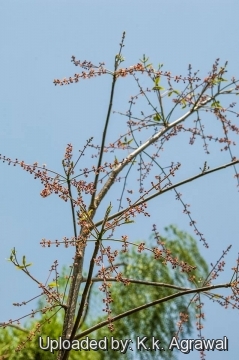 Bursera grandifolia Photo by: K.k. Agrawal
Bursera grandifolia Photo by: K.k. Agrawal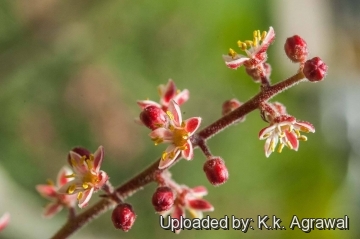 Bursera grandifolia Photo by: K.k. Agrawal
Bursera grandifolia Photo by: K.k. Agrawal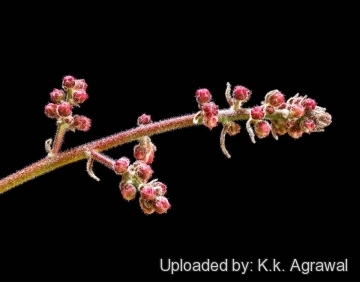 Bursera grandifolia Photo by: K.k. Agrawal
Bursera grandifolia Photo by: K.k. Agrawal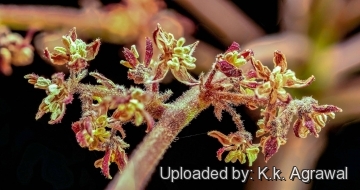 Bursera grandifolia Photo by: K.k. Agrawal
Bursera grandifolia Photo by: K.k. Agrawal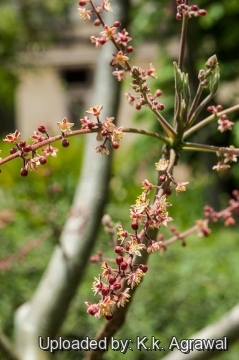 Bursera grandifolia Photo by: K.k. Agrawal
Bursera grandifolia Photo by: K.k. AgrawalSend a photo of this plant.The gallery now contains thousands of pictures, however it is possible to do even more. We are, of course, seeking photos of species not yet shown in the gallery but not only that, we are also looking for better pictures than those already present.
Read More... Cultivation and Propagation: Bursera grandifoliaSN|28008]]SN|28008]] is a striking tree that has potential as a landscape subject in essentially frost-free areas.
Growth rate: Growth is more rapid than for many other members of the genus.
Hardiness: Hardy to -4°C they prefer a dormant, winter rest period, water regularly in summer, keep almost dry in winter.
Exposure: It needs full sun.
Bonsai culture: It can be trained as a bonsai, pinch and prune plants in spring and summer but taper off in autumn so the tree can store energy for the winter instead of using it to put on new growth before resting.
Medicine: The bark is widely used to brew a refreshing medicinal tea and is said to "give strength."It is nearly as popular as copalquin (Hintonia latiflora). The tea is refreshes and is drunk routinely when coffee is not available. The tea turns one's urine red, as we can testify. Trunks are often scarred because residents use the bark for food (tea) and medicine. For cuts, the dried and ground bark is applied and rubbed in, with such treatment the cut heals in a short time without infection.
Fences: Pruned branches of this tree are sometimes used for fence posts that often form roots and develop into a new tree.
Other uses: The gum is used for glue and caulk.
Propagation: By seeds or cuttings. Seeds germinate germinate quite easily in 4-14 days and seedlings develop rapidly. Cuttings made in summer may form roots and begin vegetative growth within eight weeks.















